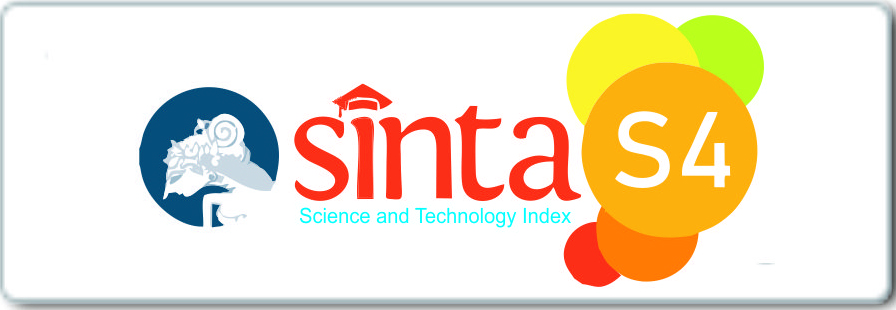Inhibition Activity Of Black Cumin Toothpaste Contain With Detergent Compared With Black Cumin Extract Non Detergent To The Growth Of Supragingiva Plaque Bacteria
Downloads
Background: Plaque can inhibit the antibacterial activity of salivary function, which can damage the periodontal tissue. Several preventive measures can be done to control plaque, mechanically or chemically. Mechanical plaque control in combination with chemical plaqie control such as toothpaste can reduce plaque. The role of SLS in toothpaste which can facilitate plaque detachment from the tooth surface. Herbal toothpaste has been developed using herbal ingredients that have antibacterial properties as black cumin (Nigella sativa). The contents of black cumin, thymoquinone, thymol, and tannins, have been proven to be effective in inhibiting the growth of plaque bacteria. Purpose: This study aims to identify the inhibitory ability of black cumin toothpaste extract containing detergent compared to black cumin extract toothpaste without detergent on the growth of supragingival plaque bacteria. Methods: This research method of diffusion of wells on BHIB media was conducted in four research groups namely negative control, cumin paste with SLS, non SLS cumin paste, and SLS and carried out bacterial planting on MHA media. Next measure the diameter of the inhibition zone around the well. Results: There was a significant difference in each group against the inhibitory growth of supragingival plaque bacteria on the Oneway ANOVA test results (p <0.05) Conclusion: Black cumin extract toothpaste containing 2% of detergent has better inhibition against supragingival plaque bacteria than non cumin detergent 3% black cumin toothpaste.
Nazir MA. Prevalence of periodontal disease, its association with systemic diseases and prevention. Int J Health Sci (Qassim). 2017;11(2):72–80.
Lertpimonchai A, Rattanasiri S, Arj-Ong Vallibhakara S, Attia J, Thakkinstian A. The association between oral hygiene and periodontitis: a systematic review and meta-analysis. Vol. 67, International Dental Journal. Wiley-Blackwell Publishing Ltd; 2017. p. 332–43.
Newman and Carranza's Clinical Periodontology - 13th Edition [Internet]. [cited 2020 Aug 12]. Available from: https://www.elsevier.com/books/newman-and-carranzas-clinical-periodontology/newman/978-0-323-52300-4
Gupta R, Ingle N, Kaur N, Yadav P, Ingle E, Charania Z. Effectiveness of herbal and nonherbal fluoridated toothpaste on plaque and gingivitis: A randomized controlled trial. J Indian Assoc Public Heal Dent. 2015;13(3):218.
Mehta P, Saini N, Saini V, shori T. A Surfactant - A New Line of Defense against Plaque. IOSR J Dent Med Sci. 2014;13(8):52–4.
Oroh ES, Posangi J, Wowor VNS. Perbandingan Efektivitas Pasta Gigi Herbal Dengan Pasta Gigi Non Herbal Terhadap Penurunan Indeks Plak Gigi. e-GIGI. 2015 Aug 5;3(2).
Tavakkoli A, Mahdian V, Razavi BM, Hosseinzadeh H. Review on clinical trials of black seed (Nigella sativa ) and its active constituent, thymoquinone. Vol. 20, Journal of Pharmacopuncture. Korean Pharmacopuncture Institute; 2017. p. 179–93.
Hasan NA, Nawahwi MZ, Malek HA. Antimicrobial activity of nigella sativa seed extract. Sains Malaysiana. 2013;42(2):143–7.
Chaieb K, Kouidhi B, Jrah H, Mahdouani K, Bakhrouf A. Antibacterial activity of Thymoquinone, an active principle of Nigella sativa and its potency to prevent bacterial biofilm formation. BMC Complement Altern Med. 2011 Apr 13;11(1):29.
Bart De Wever BVV, Frans Ramaeckers EA. The Evaluation of Sodium Lauryl Sulphate in Toothpaste on Toxicity on Human Gingiva and Mucosa: A 3D in vitro Model. Dentistry. 2015;05(09):3–7.
Groeger S, Schott S, Windhorst A, Meyle J. Effects of Toothpaste on the Gingival Barrier Function in vitro. 49(0):1–6.
Sälzer S, Rosema NAM, Martin ECJ, Slot DE, Timmer CJ, Dörfer CE, et al. The effectiveness of dentifrices without and with sodium lauryl sulfate on plaque, gingivitis and gingival abrasion”a randomized clinical trial. Clin Oral Investig. 2016 Apr 1;20(3):443–50.
This is an open access journal, and articles are distributed under the terms of the Creative Commons Lisence, which allows others to remix, tweak, and build upon the work non-commercially, as long as appropriate credit is given and the new creations are licensed under the identical terms.
Copyright notice:
IJDM by UNAIR is licensed under a Creative Commons Atribusi 4.0 Internasional.
- The journal allows the author to hold the copyright of the article without restrictions.
- The journal allows the author(s) to retain publishing rights without restrictions.
- The legal formal aspect of journal publication accessibility refers to Creative Commons Attribution (CC BY)
















